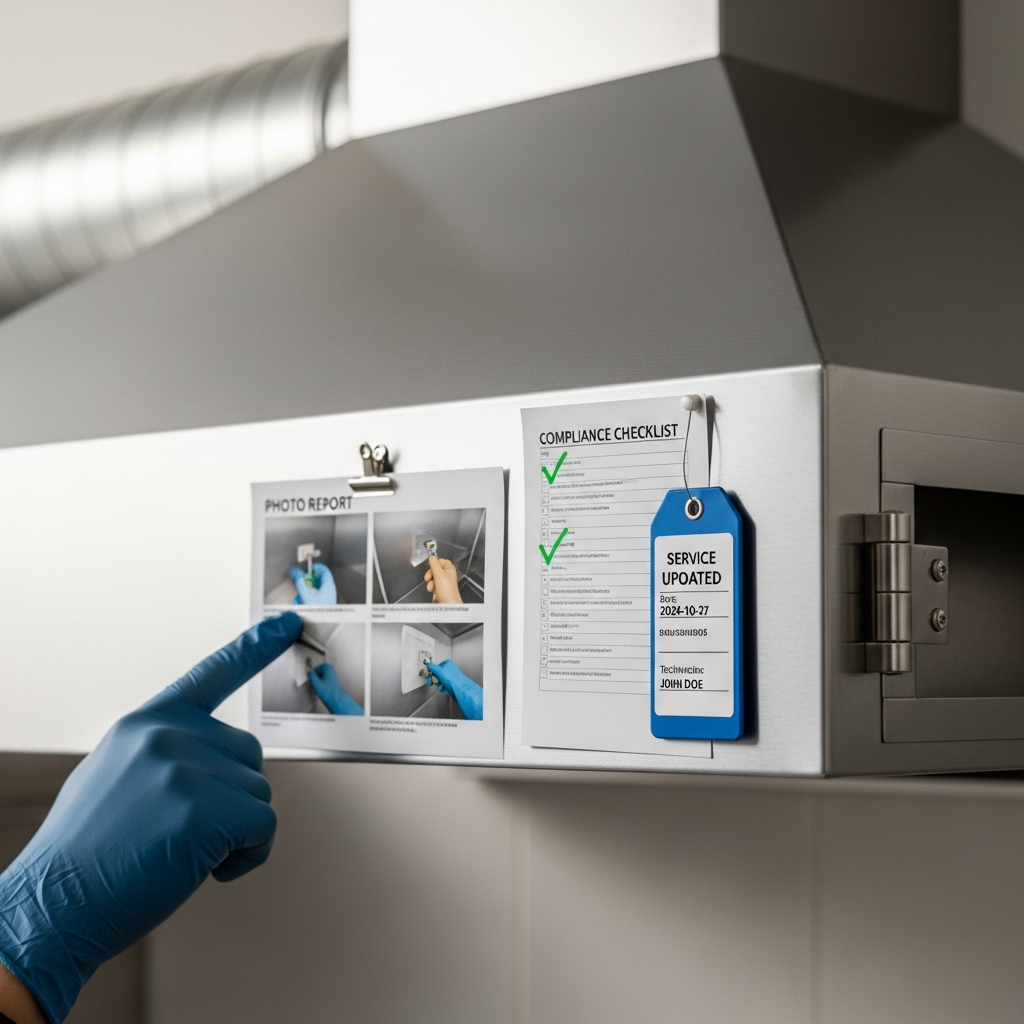Introduction: Understanding Compliance for New Jersey Kitchens
Compliance for kitchen exhaust systems is about more than passing inspections—it’s about protecting people, property, and operational continuity. In New Jersey, restaurants and food service facilities must keep hoods, ducts, and exhaust fans free of grease to reduce fire risk and maintain airflow. Establishing routine professional kitchen hood cleaning and documenting the work are central to demonstrating due diligence to fire marshals, insurers, landlords, and corporate safety teams.
Requirements touch on cleaning frequency, access, documentation, and workmanship standards. Understanding these elements helps you plan maintenance that satisfies inspectors and supports a safer, more comfortable kitchen.
Key Elements of Compliance
While jurisdictions vary in detail, several core principles guide compliance for New Jersey kitchens:
- Grease removal to bare metal where achievable, focusing on hood interiors, ducts, and fans.
- Safe access to the full length of ductwork via compliant access panels.
- Service tags indicating date and details at each hood.
- Photo‑verified reports that document the condition before and after cleaning.
- Coordination with make‑up air systems to maintain capture and containment.
- Rooftop grease containment and responsible waste handling to protect the building envelope.
Frequency Considerations
Your menu and volume determine how often to clean. High‑fat, high‑heat, or solid‑fuel operations generally require more frequent service than light‑duty kitchens. Many New Jersey restaurants adopt a 90‑day cycle as a starting point, adjusting up or down based on findings and inspector feedback. Seasonal businesses should plan a pre‑season cleaning and mid‑season verification to remain consistent through peak traffic.
Access and Documentation
Compliance relies on visibility. If ducts lack adequate access, grease can remain in hidden sections, undermining safety. Install access panels where needed to ensure technicians can reach and clean every segment. After service, confirm that tags are updated and that a detailed, time‑stamped photo report is filed. Keep these records readily available for inspectors and insurance reviews.
Coordination with Building Management
In multi‑tenant or managed properties, coordination with building engineers is crucial. Elevator reservations, roof access permissions, and noise or water restrictions can affect timing. Communicating your schedule and needs reduces friction with neighbors and ensures a smoother service night, benefiting both your team and the property.
Mid‑Article Emphasis: Risk Management
Compliance is part of an overall risk strategy. Pair routine filter maintenance and staff training with scheduled professional kitchen hood cleaning to control grease load, document diligence, and support ventilation performance during busy shifts and special events.
What Inspectors Look For
- Service tags with current dates and identifiable hood locations.
- Cleanliness of hood interiors, filters, and visible duct openings.
- Access panels installed and secured properly with listings or labels.
- Rooftop areas free of grease discharge and overspray; containment in place where needed.
- Photo or written documentation describing scope and findings.
- Evidence of staff training on filter maintenance and start‑up checks.
Common Pitfalls That Trigger Citations
- Out‑of‑date tags or missing documentation.
- Insufficient access panels, leaving sections uncleaned.
- Grease spills on rooftops due to inadequate containment.
- Blocked or malfunctioning make‑up air reducing capture efficiency.
- Visible grease drips or residue around the hood perimeter or along duct seams.
How to Build a Compliant Program
- Assess current state: Review existing tags, reports, and any inspector notes.
- Map your system: Identify hoods, duct runs, fans, and access points.
- Set frequency: Base on menu, volume, and prior findings; adjust after each cycle.
- Standardize documentation: Keep a dedicated binder or shared digital folder.
- Train staff: Focus on filter care, start‑up checks, and spotting early warning signs.
- Coordinate with building teams: Schedule access and communicate constraints.
- Review and improve: After each service, assess recommendations and close the loop on follow‑ups.
Special Considerations for Different Operations
- High‑volume chains: Standardize reporting and scheduling across sites for predictable compliance.
- Hotels and venues: Plan service around events; bundle multiple hoods in one visit.
- Healthcare and education: Emphasize containment and after‑hours work with strict documentation.
- Seasonal restaurants: Time cleanings before opening and during peak to manage load.
Signs You May Be Out of Compliance
- Past‑due service tags or missing reports.
- Staff complaining about smoke, heat, or odor near the line.
- Fan vibration, belt squeal, or rattling suggesting mechanical wear.
- Grease drips around access panels or on the rooftop.
- Inspector or landlord feedback noting deficiencies.
Frequently Asked Questions
Q: What happens if we cannot access certain duct sections? A: Install compliant access panels to enable full cleaning. Document new access points for future visits.
Q: How do we prove work was completed thoroughly? A: Maintain photo‑verified reports and updated tags for each hood and duct section.
Q: Who needs to see our documentation? A: Fire marshals, insurers, landlords, and internal safety teams commonly review records.
Q: Can staff maintain compliance alone? A: Staff support daily cleanliness and filter care, but full duct and fan cleaning requires trained professionals and specialized equipment.
Q: How do seasonal peaks affect scheduling? A: Increase frequency during busy months and reassess after peak to maintain safe grease levels.
Putting Compliance into Practice in New Jersey
Compliance is a process, not a one‑time event. Build a schedule, standardize documentation, and collaborate with your building team. Doing so protects your people and your brand while making inspections straightforward.
Get Help Meeting Requirements
Establish a dependable program that satisfies inspectors and supports safe operations. Connect with a New Jersey provider to review your tags, reports, and schedule, and arrange professional kitchen hood cleaning suited to your facility’s layout and hours.

